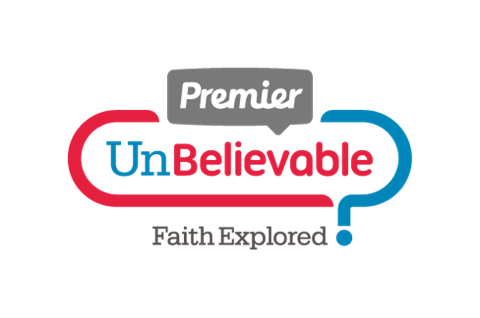Keep things the same
As far as was possible, we kept our routines the same, going to the same activities right up until a couple of days before moving (by which stage we were in the midst of a box-filling frenzy!). This included our daily Bible stories and prayers and weekly Shabbat meal. Our Shabbat meal is our family’s spiritual focus for the week, where we celebrate Jesus and what he means to us using some simple symbols (candles, water, bread and wine) and bless each other with Bible blessings (read more about it at GodVenture.co.uk). Even on the Friday evening before moving day, we had Shabbat, albeit with takeaway Chinese rather than the usual roast chicken! We then had a special first Shabbat in our new home the next Friday evening. As well as Shabbat, I am making sure that as we develop our new home routine, we are including all the rituals we had in our old house. This is significant even for my 3-year-old, who regularly says about lots of different activities: “I have done this before in our old house.” It’s important to experience God, the same yesterday, today and for ever, and ritual helps ground us in this.
Recognise and acknowledge feelings
Something we can find hard as adults is holding both positive and negative emotions at the same time. This is one of the things I’ve learned through working with grief experts. It’s important to be allowed to be sad and happy. To do transition well, this is a skill worth developing.
When we celebrate our family Passover meal, two of my favourite parts are when we mix two physical objects to represent positive and negative experiences. One pair is when we dip parsley into salt water. Parsley represents Spring and new life, while salt water represents the tears of the Israelite slaves. The other pairing is when we dip sticks of fiery horseradish into charoset, a sweet apple and date mixture. Personally I always find it helpful to use these physical objects to bring together positive and negative things going on in my life, or positive and negative things in one situation, inviting God into both. (For more about our Passover meal visit GodVenture. co.uk/tag/passover.) As we moved house, we talked a lot about the things we will miss about our old house as well as the things we were looking forward to in our new one. We did a few activities to make physical reminders of our old house - we collected leaves from each tree in the garden to make a picture with - as well as researching and even visiting some places near our new house (in our case, a library and a park). When things are changing, it’s possible to appreciate and be thankful for the old, and joyfully expectant of the new.

One thing I noticed at home was that we had a lot more angry outbursts than usual for a month or so before and after we moved. I found it best to acknowledge this and to explore what feelings might be lurking behind anger. We chatted about how the Bible says not to sin in our anger, and gave each other a quiz about healthy and harmful ways to express our anger. We practised some of our good ways, our favourite being shouting out of the car window when were driving through the countryside! We also watched the film Inside Out and chatted through the different feelings and how they related to us and how we felt.
Identify with other people’s transitions
The Bible is full of people whose lives change, often due to God’s intervention. My husband and I very much feel that our move is something God wanted, and one way to help us all see God at work in this time of transition is to read Bible stories and ask wondering questions, as used in Godly Play. One story I love to use like this is that of ‘The great family’, which covers the story of Abraham and Sarah and onto Isaac and Rebekah. There is such a lot of physical transition in these stories, and it lends itself nicely to thinking about change as we wonder where we are in the story.
Intentional transitional activities
When searching for activities, I didn’t find many, but I remembered some missions training I’d received many years ago and with a little digging, I found the material. It’s called RAFT and is geared towards ‘third culture kids’, or missionary children, but I found the principles and activities relating to them incredibly helpful for myself as well as my children. The acronym RAFT is used to help us remember four important things to do in transition:
Reconcile - to make relationships right. The material talks about leaving right to enter right. The theory here is that unresolved conflict in relationships makes us less ready for new challenges ahead. Reconciliation and forgiveness change us as people, making us more ready to move into the future unencumbered. I didn’t find this an easy one to help my children with (they’re only 3 and 5 years old), but found it very useful myself. And what a thoroughly faith building activity! As we say in the prayer Jesus taught us: forgive us our sins as we forgive those who sin against us. Change often gives us a chance for a clean-up and a clean start.
Affirm - tell people you appreciate and love them and will miss them. We moved less than an hour from our old house, but it was important for us all to write notes or say to people we lived near how much we enjoyed their friendship, and to arrange how and when we might next see them. We did this with our adult and child friends, recognising the importance of both.
Farewells - say goodbye to people and places you have enjoyed. We had a funny moment with this. I asked my 3-year-old what or who she wanted to say goodbye to, and she said the zoo. So I dutifully arranged a visit to the local zoo. It wasn’t until we were about to leave the zoo that she said: “Not this zoo, Mummy! The zoo we went to with Uncle Dan!” (This is actually nearer to our new house!) However, we did say ‘goodbye’ to various parks and soft plays, as well as friends we don’t now live as close to.
Think future - chat about your destination, the bits you know about and the bits you don’t. I was chatting with my friend Rebecca, who’s also moved house recently. She shared that she intentionally looked for the coincidences, or rather God-moments in their move, and let them lead her into more of a sense of God with her, going ahead to provide good things in their new place. It’s sometimes hard to imagine the new good things God is preparing for us, especially as we feel sadness leaving old good things behind. For example, her daughter loves guinea pigs, and her new class pets were guinea pigs. I think by modelling, articulating and inviting our children into our God experiences as we transition, we have the chance of not only transitioning well together, but also deepening our walk with God.
Click here to request a free copy of Premier Youth and Children's work magazine




























